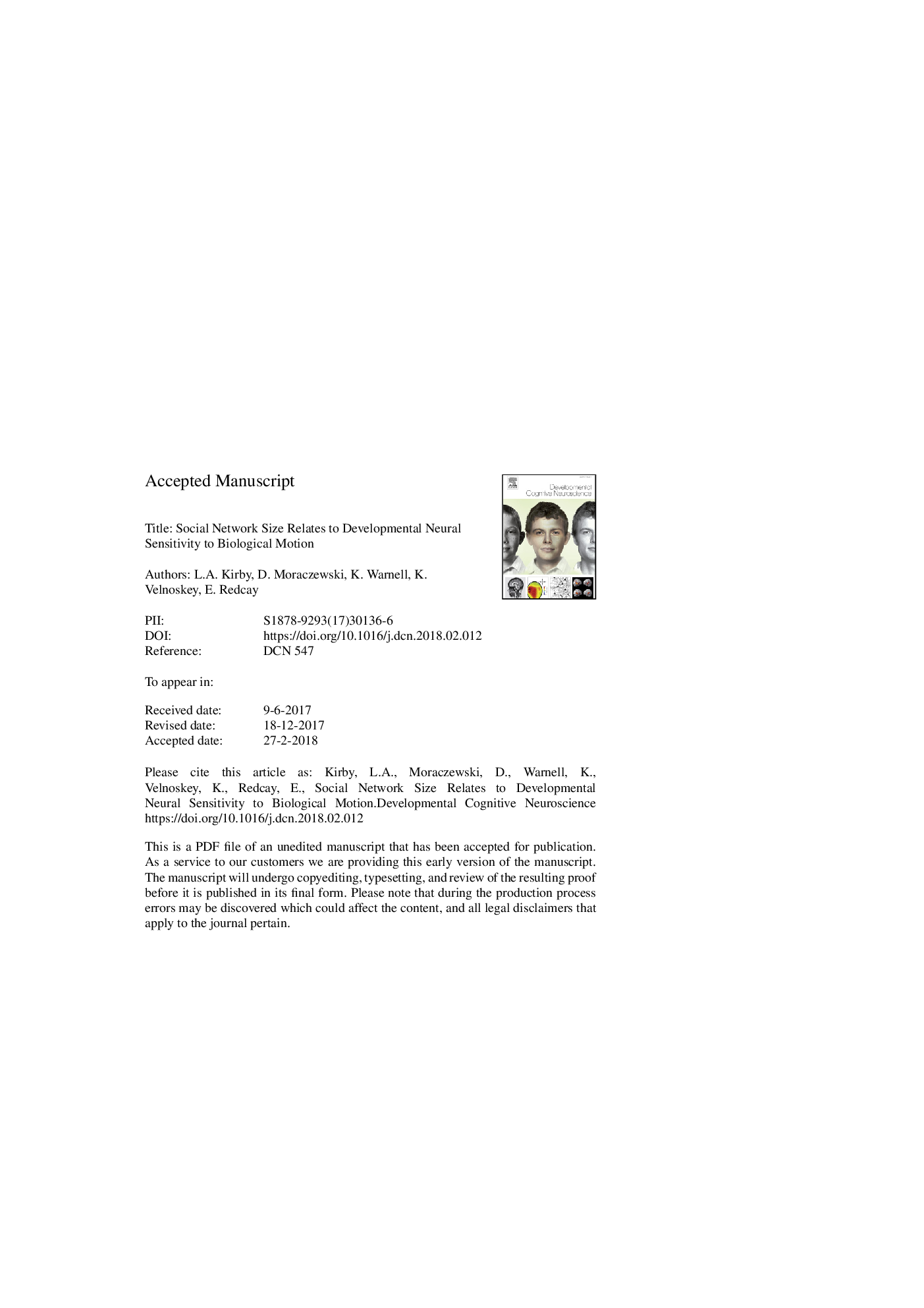| Article ID | Journal | Published Year | Pages | File Type |
|---|---|---|---|---|
| 8838293 | Developmental Cognitive Neuroscience | 2018 | 36 Pages |
Abstract
The ability to perceive others' actions and goals from human motion (i.e., biological motion perception) is a critical component of social perception and may be linked to the development of real-world social relationships. Adult research demonstrates two key nodes of the brain's biological motion perception system-amygdala and posterior superior temporal sulcus (pSTS)-are linked to variability in social network properties. The relation between social perception and social network properties, however, has not yet been investigated in middle childhood-a time when individual differences in social experiences and social perception are growing. The aims of this study were to (1) replicate past work showing amygdala and pSTS sensitivity to biological motion in middle childhood; (2) examine age-related changes in the neural sensitivity for biological motion, and (3) determine whether neural sensitivity for biological motion relates to social network characteristics in children. Consistent with past work, we demonstrate a significant relation between social network size and neural sensitivity for biological motion in left pSTS, but do not find age-related change in biological motion perception. This finding offers evidence for the interplay between real-world social experiences and functional brain development and has important implications for understanding disorders of atypical social experience.
Related Topics
Life Sciences
Neuroscience
Behavioral Neuroscience
Authors
L.A. Kirby, D. Moraczewski, K. Warnell, K. Velnoskey, E. Redcay,
